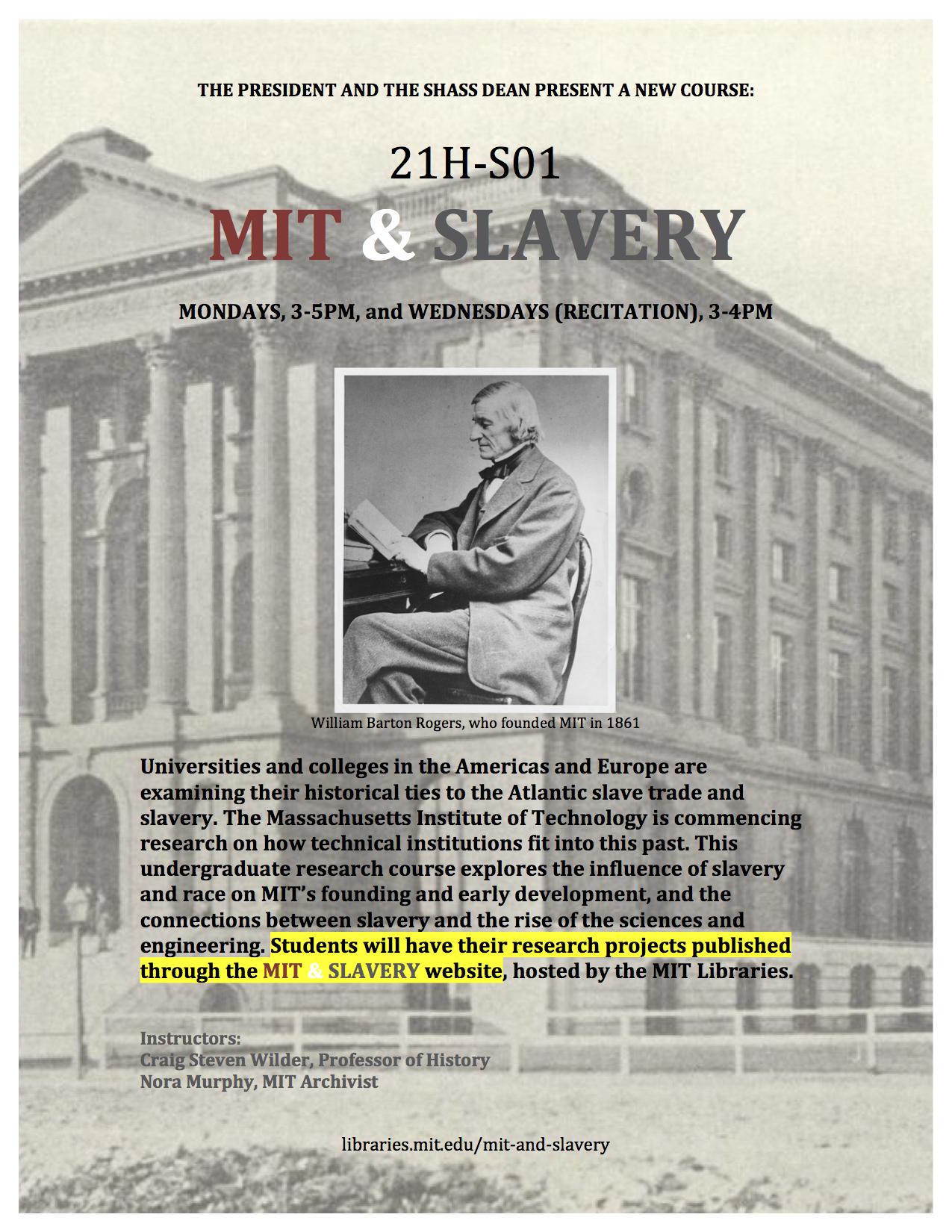POSTER: MIT & Slavery course, 2017

Poster for MIT & SLAVERY course (21H-S01), Fall 2017
Instructors
Craig Steven Wilder, Barton L. Weller Professor of History
Nora Murphy, MIT Archivist
Course Description
This undergraduate research course explores the influence of slavery and race on MIT’s founding and early development, and the connections between slavery and the rise of the sciences and engineering. Students will have their research projects published through the MIT & SLAVERY website, hosted by the MIT Libraries.
MIT & Slavery
Universities and colleges in the Americas and Europe are examining their historical ties to the Atlantic slave trade and slavery. The Massachusetts Institute of Technology is commencing research on how technical institutions fit into this past.
William Barton Rogers, our founding president, spent his formative years and much of his professional life surrounded by slaves. As a teenager, Rogers moved with his family to the College of William and Mary, where his father, Patrick Kerr Rogers, had been appointed professor of natural history and chemistry. The Rogers family lived in Brafferton Hall—formerly the Indian College—which had its own endowment of slaves. William and his brother James enrolled at the college. In fact, the four Rogers brothers all had lengthy careers in the South. In 1828 Patrick Kerr Rogers died, and William assumed his chair on the faculty of William and Mary. William Barton Rogers later became a professor and chair of the faculty at the University of Virginia.
Slavery funded higher education in the South. It also fueled a manufacturing revolution in the North that transformed American campuses. When William Barton Rogers came to New England, he found broad interest in technical education. Raw materials produced by slaves in the South and the West Indies flowed into northern port cities. Sugar refiners in Brooklyn, New York, and cotton textile producers in Lowell, Massachusetts, were among the manufacturers who turned to models of technical education in France and Germany to create expertise for the industrializing United States. Industrialists in the Mid-Atlantic and New England began investing in practical education to connect a southern landscape dominated by slave labor to a northern landscape giving way to factories and machines.
It is fair to assert that the idea of MIT was born in the slave economy. However difficult, this is our history.
MIT & SLAVERY, MIT Libraries
WATCH: Archived livestream of MIT and the Legacy of Slavery: Reviewing the Early Findings